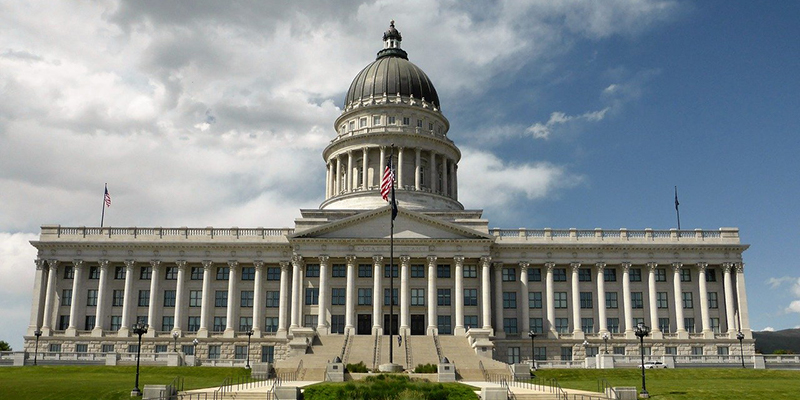Over the past year, we have explored how different states are developing STEAM learning and computer science initiatives–from California to New York. In the coming months, we’ll keep an eye on how the global COVID-19 pandemic will impact both state-level and internal school curriculum initiatives. Pre-coronavirus school closures, the state of Utah recently stepped up to offer all of its students computer science courses with a significant boost from the local tech community.
Learn how this state is hoping to bring coding to all of its students and why it’s an important curriculum change.
The $5 Million Challenge
In 2019, the Utah tech industry demanded computer science education. They challenged the legislature to find $5 million to allocate to computer science resources, money that would then be matched by the leaders of Silicon Slopes, a nonprofit that works to empower Utah’s tech community.
The $5 million challenge was introduced during the 2019 Silicon Slopes summit, where executive director Clint Betts asked the other leaders present to put their money where their mouths are. Each of the five executives pledged $1 million to fund computer science education as long as the governor could find enough money to match it in the budget.
“So many entrepreneurs and so many companies talk about building their company to change the world, right?” Betts said. “And you’re like, ‘You’re building an analytics platform. You’re not changing the world.’”
This was an incredibly powerful gauntlet thrown at the government, as more than 24,000 conference attendees bore witness to the donation and the expectations set by the speakers. In the end, these efforts worked. In December 2019, Governor Gary Herbert announced his intent to invest more than $10 million in computer science funding, pending state house and senate budget approval. Utah would provide computer science classes to every K-12 student by 2022, reports Art Raymond at Deseret News.
“Computer science has become a form of literacy just like reading,” says Aaron Skonnard, founder of Silicon Slopes and CEO of enterprise technology learning platform Pluralsight. “But not everyone is learning it. And our kids do not have equal opportunities.”
This donation serves as one step toward equality in Utah K-12 schools while reminding government officials about the importance of education and STEAM funding.

Introducing the Utah Computer Science Master Plan
This wasn’t the first time tech leaders in the state approached educators and legislatures to develop a CS curriculum. For the past few years, the leaders at Silicon Slopes have worked with the Department of Education to develop a comprehensive plan for computer science education: The Utah Computer Science Master Plan was born. The passage of this curriculum makes Utah the 12th state to implement a statewide CS initiative.
“The Utah Computer Science Plan identifies key needs, strategies, and target outcomes across six essential categories that uplift the education system and its successful and equitable integration of computer science,” explains Sydnee Dickson, Utah’s superintendent of public instruction. “The Board of Education is committed to increasing enriching, high-quality computer science learning opportunities for students across grade levels.”
The creation of the plan was developed by a task force that has been meeting since 2018. Education specialist at the Utah State Board of Education Ashley Higgs was part of that task force asked to create a comprehensive computer science curriculum. She worked alongside parents, teachers, and other key stakeholders.
“The task force met three times to see first, what we had already; second, where we were lacking; and third, where we needed to go,” Higgs says. “Computer science isn’t about sitting in front of a computer and coding all day. It’s about how to solve problems and how to think outside the box because a lot of times there are many answers to a problem.”
The master plan was also developed with the help of the nonprofit organization Washington STEM, which strives to advance “excellence, equity, and innovation” in STEM education. In a statement on the collaboration, they say they are “proud to have played a crucial role in helping the state of Utah lead the way to prepare children for the rapidly changing needs of the workplace.”

Parents and Students Want Computer Science Education
There’s a reason why Utah is rushing to implement a computer science plan: Parents, students, and employers are realizing the subject’s value.
“I think, for a long time, computer science has been seen as, ‘Well that’s only if you’re really into technology,’” explains Sarah Young, director of strategic initiatives at the Utah State Board of Education. “Technology is a part of our day-to-day life…so this isn’t for a select group; this is for all Utah kids.”
To get an idea for the work cut out for the state, only 32 schools in Utah offer an AP Computer Science course and just 376 AP Computer Science exams were administered in 2018.
It’s not just tech innovators and parents demanding access to computer science education. Students nationwide are getting involved too. Out of 300 students in one Louisiana high school, 75 requested a CS class, leading their chemistry and science teacher to try and develop a curriculum. In a different school in Nebraska, 65 out of 200 students asked for a computer science course.
“It’s empowering to see [my students] create an answer, rather than just finding it in the book,” Kyleigh Lewis, the teacher from Nebraska, says.
Students in Utah are no different from their peers across the country. They want computer science courses and have been vocal in their demands.

Pre-Closures, Coding Clubs and Programs Were Packed With Students
Utah students have also been flocking to CS clubs both in their schools and outside of them.
Before the Board of Education computer science curriculum task force, Ken Garff launched the Code to Success program (as part of the foundation Success in Education Utah, a public charity founded by Bob and Kathi Garff) for high school students. Participants attend nine weeks of summer school to learn coding. The program has been exceptionally popular: Last year, more than 1,200 applicants fought for 930 openings across 27 schools in 14 districts.
“These students are remarkable in that they see an opportunity to virtually lift themselves into a better paying situation in the future by learning to code through the Code to Success program,” Rick Folkerson, president of Garff Foundation, said of the program. “And they are excelling in ways we had only dreamed of.”
Individual schools are seeing success with their after-school coding clubs. With the help of school counselor Mark Jones, who hosts a coding club, the students at West Jordan Middle School have entered competitions to prove their skills. They’ve won the Jordan School District’s CTE Choice Award, Utah Jazz STEM student of the month and awards from the Utah STEM Action Center.
The Utah STEM Action Center is an organization working to spread STEM education across the state. This group reports that there has been a 33 percent increase in demand for STEAM jobs within the state over the past 10 years and more than 18,500 high school graduates report an interest in STEM. This group provides grants, sponsorships and facilitates “STEM education by providing a platform for educators to share lesson plans to students of all levels.”
Looking Ahead: CS Must Be Integrated Into Other Subjects
The goal of Utah’s Computer Science Master Plan is to provide lessons that will benefit all students, not just those who want to enter the tech industry and become future Silicon Slopes leaders. When students study CS, they learn computational thinking, logic, and a variety of soft skills that they can tap into throughout their future careers.
“Even students who will not need to program at all are likely to have important encounters with computational thinking later in life,” explains Princeton’s William O. Baker Professor in Computer Science Robert Sedgewick. “For example, philosophers, politicians, reporters and, well, everyone — not just software engineers — must address privacy, security and ethical issues in software.”
Sedgewick lists several other careers including archaeologists, artists, and biologists that use programming, technology and critical thinking.
For this school year and the next, schools in Utah and other states may need to find ways to integrate coding and computer science into subjects like math and ELA. According to a new NWEA brief titled The COVID-19 Slide, policymakers, educators, and parents are going to need to work together to give students access to engaging math and reading instruction to counteract ground lost in those subjects during school closures. Incorporating technology and coding can make that instruction more engaging, while laying the groundwork for the larger goal of CS instruction for all by 2022.
Images by: RobinSaville, 3282700, jovannig/©123RF.com, dolgachov/©123RF.com









